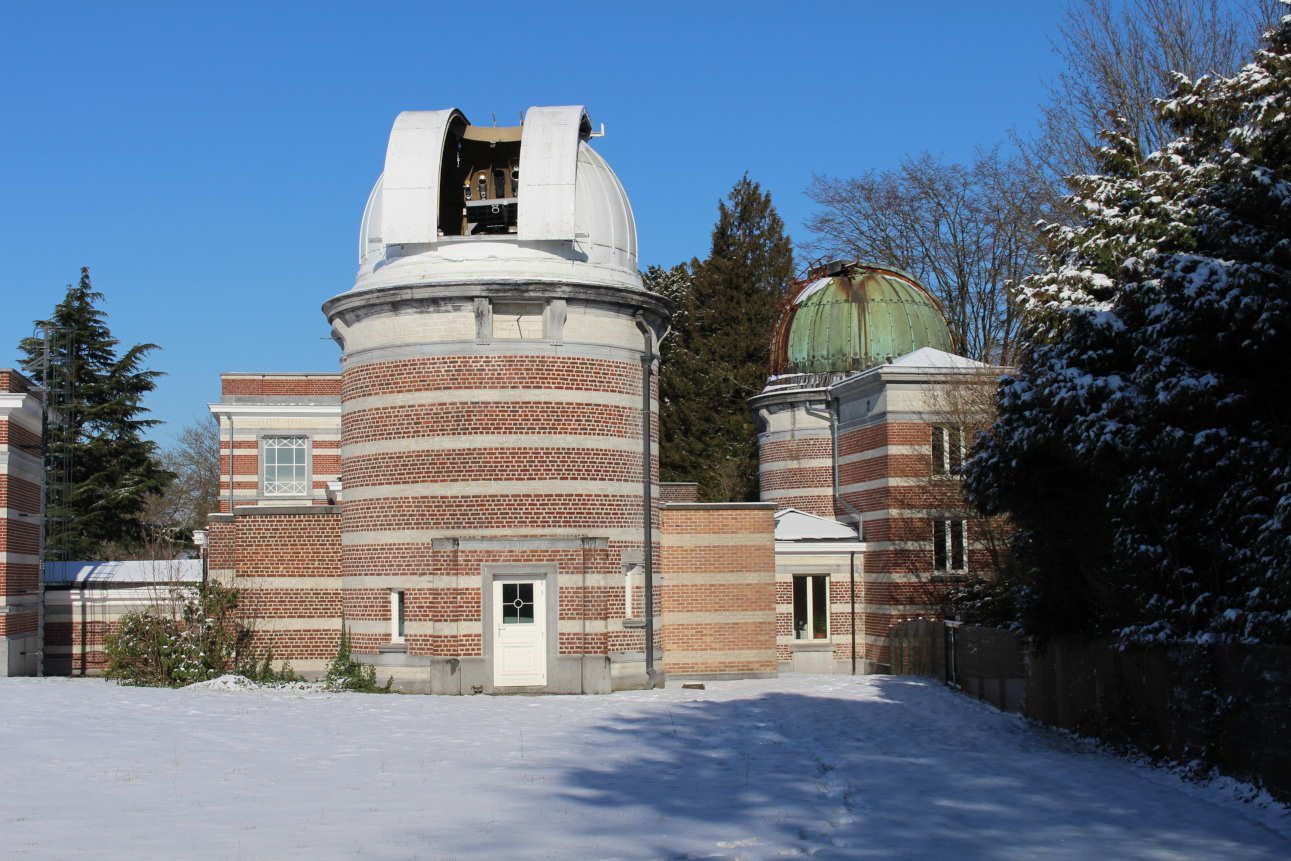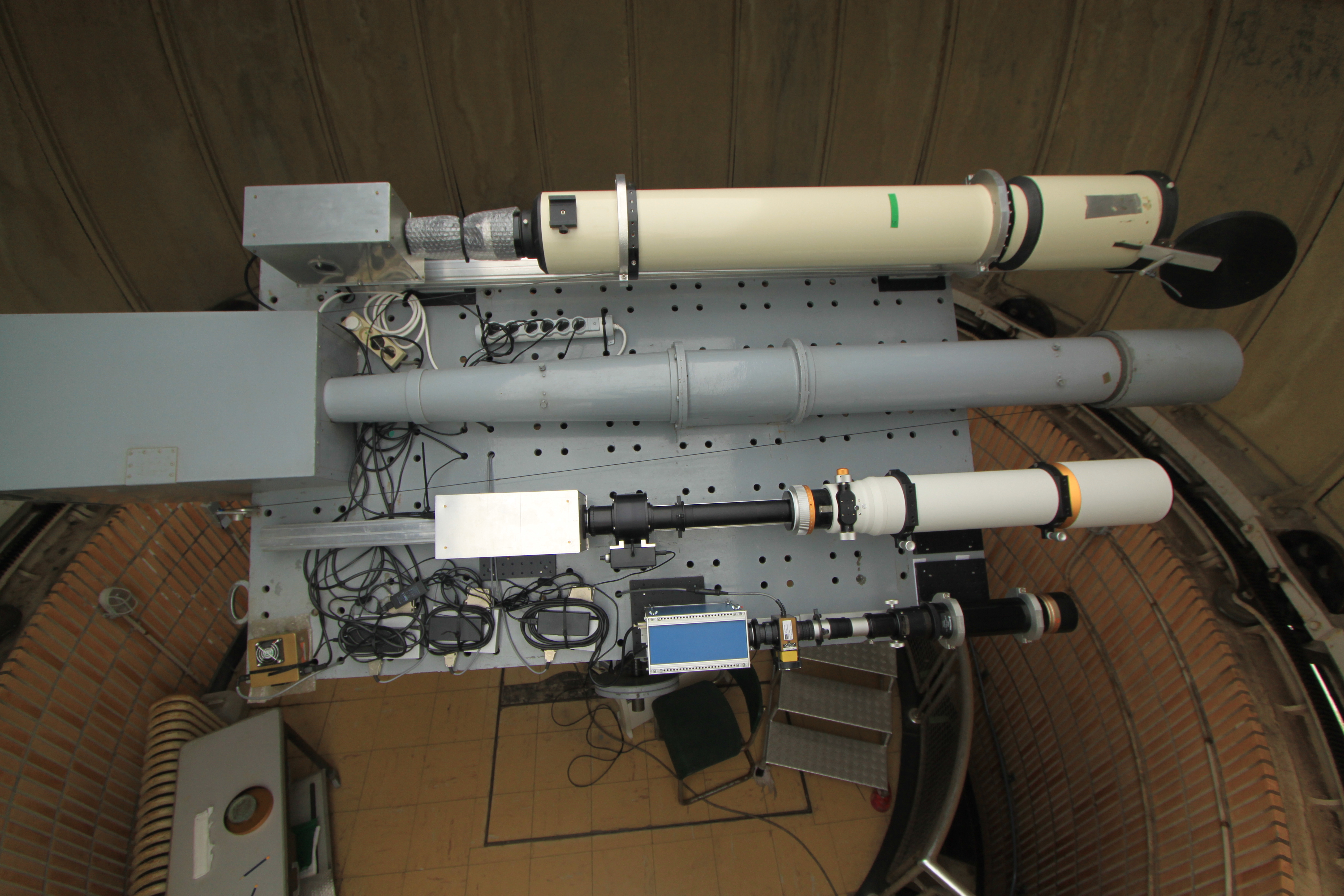USET @ ROB


USET stands for the Uccle Solar Equatorial Table. It consists of a large optical bench,
where four telescopes are installed, supported by an equatorial mount. The instruments are located
in Uccle, south of Brussels in a copper dome that dates back from the construction of the Observatory
in the late 19th century. The mount was constructed and put in operation in 1955-56 in preparation
of the International Geophysical Year (1957-58).
The oldest telescope is a historical Grubb refracting telescope dating from the late 19th century.
The telescope projects a 25-cm image of the solar disc on a screen to make drawings of the sunspots.
The three other telescopes are equipped with CCD cameras to produce digital images of the Sun.
One telescope is used to monitor the photosphere in White-Light. Two other telescopes are used to produce
images of the chromosphere with narrow-band filters in the H-alpha (656.3 nm) and the Ca II-K (393.4 nm) lines.
All the images and drawings are available on the
USET website
Location Details
| Location | Royal Observatory of Belgium, Brussels, Belgium |
|---|---|
| Coordinates | 50°47'55.0"N 4°21'34.4”E |
| Altitude | 104.9m |
| Type | Equatorial Table on which four refracting telescopes are mounted |
| Operated by | USET-team at ROB, Brussels, Belgium |
| Instruments | White-Light Visual ; White-Light Imaging ; H-alpha Imaging ; CaII K Imaging |
Telescope Time
N/A ; The telescopes are operated by the Principal Investigator Team.
Observing Cycles
N/A ; The telescopes are operated every day from sunrise to sunset if weather permits (260 observations per year on average). The drawings are done once or twice per day. The images are taken at a synoptic cadence of 15 minutes and at high cadence (4 images/s) in case of solar activity or during dedicated campaigns.
White-Light Visual Telescope
- Aperture: 16 cm
- Focal: 245 cm
- Detector: projection of 25-cm image of the solar disc on a screen to make sunspot drawings
White-Light Imaging Telescope
- Aperture: 15 cm
- Focal: 160 cm
- Field-of-view: 1.05 solar radius
- Detector: QImaging Retiga, Kodak interline CCD, 2048 x 2048 pixels, 12 bits digital output
- Wavelength: wide-band filter peak at 510 nm
- Filter: Schott BG18, blue-green
H-alpha Imaging Telescope
- Aperture: 8 cm
- Focal: 15 cm
- Field-of-view: 1.3 solar radius
- Detector: QImaging Retiga, Kodak interline CCD, 2048 x 2048 pixels, 12 bits digital output
- Wavelength: 656.3 nm
- Bandpass: 0,05 nm
- Filter: Fabry-Perot etalon (DayStar)
Ca-II K Imaging Telescope
- Aperture: 13.2 cm
- Focal: 9.24 cm
- Field-of-view: 1.5 solar radius
- Detector: QImaging Retiga, Kodak interline CCD, 2048 x 2048 pixels, 12 bits digital output
- Wavelength: 393.4 nm
- Bandpass: 0,27 nm
- Filter: Interference filter (Barr Assoc.)